People in between: the Matawai Maroons of Suriname
(1981)–Chris de Beet, Miriam Sterman–
[pagina 153]
| |
[pagina 155]
| |
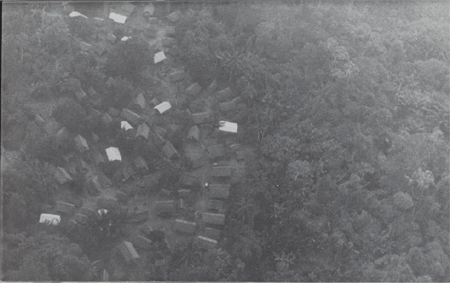 Areal view on an upriver village. New style houses with roofs of corrugated iron contrast with the traditional ones.
| |
[pagina 156]
| |
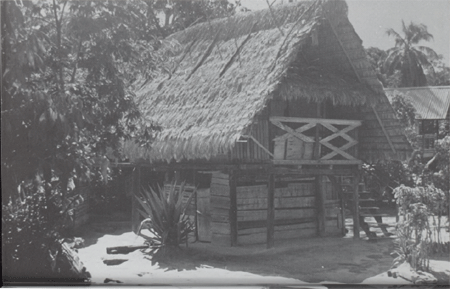 Traditional house built on piles, with a palm-leave roof. In the background a modern house with a roof of corrugated iron can be seen. The room under the piles of this house is used for cooking purposes. Most houses have a separate cooking house.
| |
[pagina 157]
| |
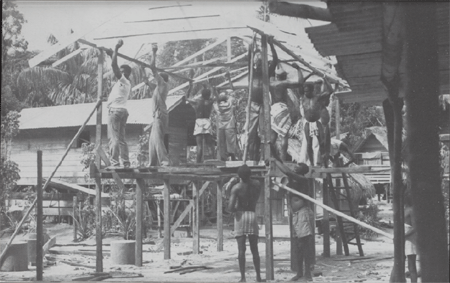 Communal help at the building of a new style house. The house in the background was finished shortly before.
| |
[pagina 158]
| |
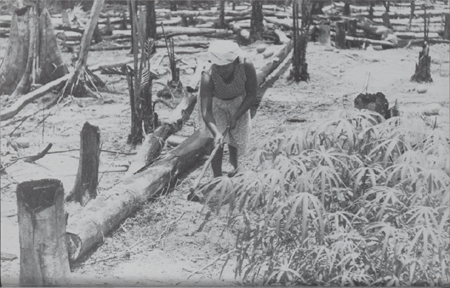 The planting of rice on a recently cleared garden is done with a hoe. At this time the watermelons (seen in the background) can already be harvested. In the front the cassave, which was planted shortly after burning.
| |
[pagina 159]
| |
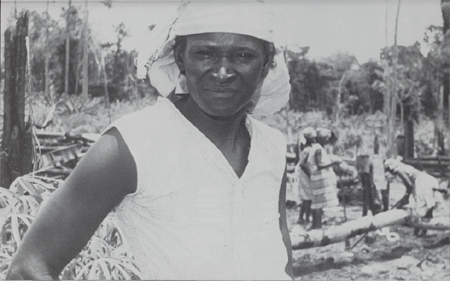 A woman in front of her garden.
| |
[pagina 160]
| |
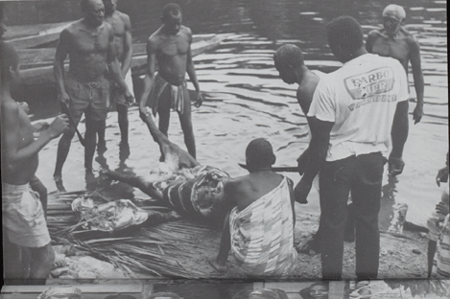 Butchering and dividing a tapir by the river side. The pieces of tapir meat are then sent to the surrounding villages.
| |
[pagina 161]
| |
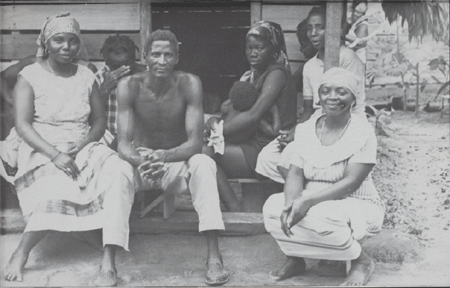 Attendants of a ‘giving’ ceremony (marriage) listening to the speeches from a nearby cooking house.
| |
[pagina 162]
| |
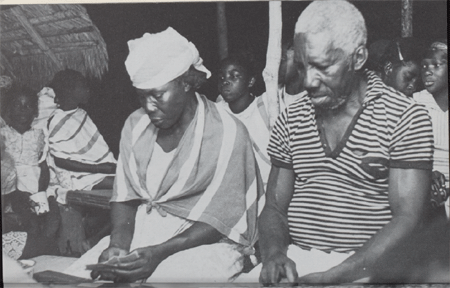 Playing cards at a whole night wake (booko di dia).
| |
[pagina 163]
| |
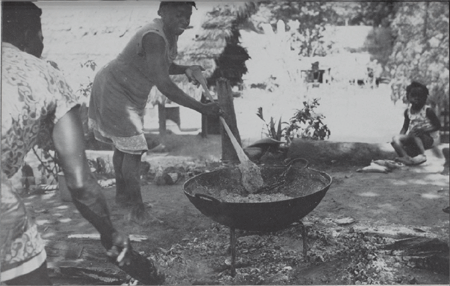 The preparation of peanut candies for a funeral festival; the sticky substance is stirred with a large spoon.
| |
[pagina 164]
| |
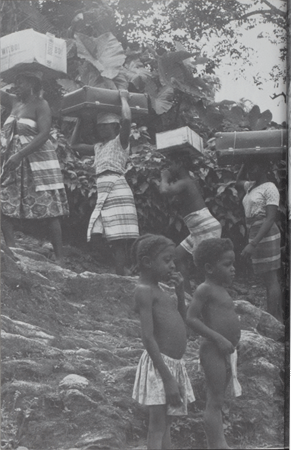 Kinsmen assist a widower who has spent the mourning period in his wife's village in carrying his goods to his own house.
| |
[pagina 165]
| |
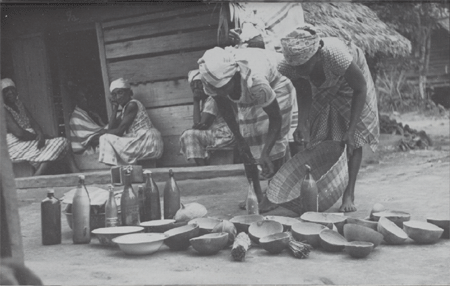 Part of the mourning proceedings. The widower who has spent the mourning period in his wife's village, is returned to his own village. The relatives of his deceased wife present bottles of salt and calabashes to his kinsmen.
| |
[pagina 166]
| |
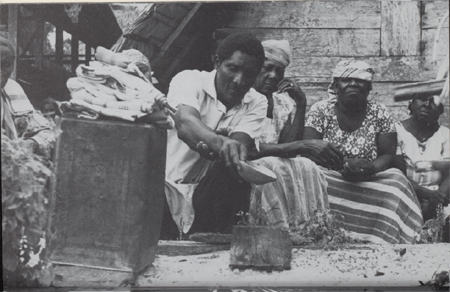 Libation to the ancestors. In the foreground is a tin of rum and a pile of used cloths (see p. 266-8).
| |
[pagina 167]
| |
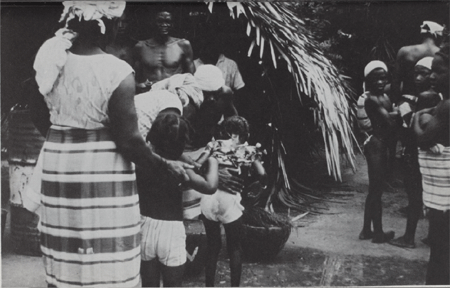 Ritual washing at an obia wosu built especially for this purpose, after a case of drowning. From the large earthenware pots (agban) herbal water is sprinkled on the heads and shoulders of the villagers. People who happened to have seen the corpse line up in another row (on the right); their heads are tied with white kerchiefs and they are given a separate treatment.
| |
[pagina 168]
| |
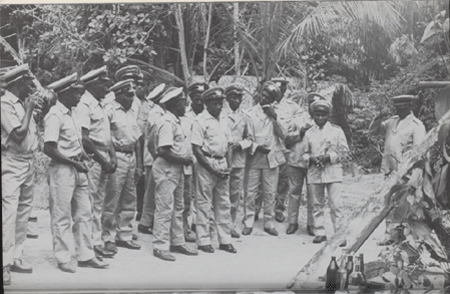 Village officials dressed in their uniforms have assembled at the ancestor pole, for the installation of a number of new basia in Posugunu, village of the gaaman.
| |
[pagina 169]
| |
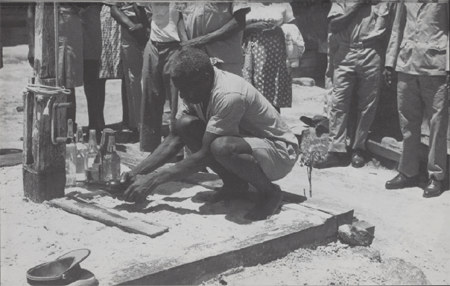 Libation to the ancestors on the occasion of the inauguration of a headman in the village. At the foot of the ancestor pole, water and other drinks are poured on the ground.
| |
[pagina 170]
| |
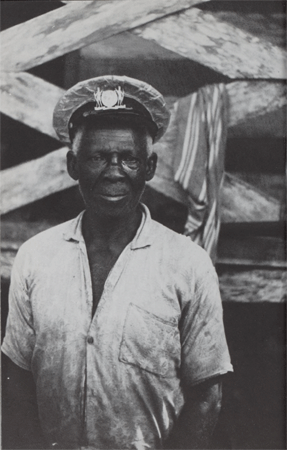 Portrait of our late friend Petrus, captain of Makajapingo.
|
|

